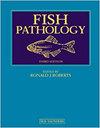日本奥濑湾养殖的五角黄尾七叶鳗幼鱼感染诺卡菌的流行情况
IF 0.2
4区 农林科学
Q4 FISHERIES
引用次数: 4
摘要
由西叶诺卡菌引起的诺卡菌病使日本西叶诺卡菌的鱼类生产遭受严重损失。在本研究中,我们调查了日本Owase湾外海网箱养殖的五辐射黄尾七叶鳗的感染情况。分别于2017年5月、6月、7月、8月、11月和2018年1月采集幼鱼(n = 5)的鳃、血清和脾脏。2017年11月和2018年1月,血清抗瑟雷菌抗体滴度显著升高。在2017年5月、7月、8月、11月和2018年1月采集的1-4只个体的脾脏和/或鳃中,采用PCR检测到该菌16S rRNA基因,而在Ogawa培养基上未从任何个体中分离到该菌。脾脏切片未见肉芽肿性炎症,这是诺卡菌病的典型病理特征。然而,荧光免疫组化与抗n。兔血清中均可检出本研究鱼类脾脏中的长棒状和短棒状细菌。这些数据表明,在奥色斯湾养殖的黄尾鱼幼鱼在5月份就已经感染了瑟氏奈瑟菌。此外,梭状奈瑟菌可能处于活但不可培养状态(VBNC),在养殖的黄尾鱼中造成潜伏感染。本文章由计算机程序翻译,如有差异,请以英文原文为准。
Prevalence of Infection with Nocardia seriolae in Juvenile of Yellowtail Seriola quinqueradiata Cultured in Owase Bay, Japan
Nocardiosis caused by Nocardia seriolae makes severe losses of fish production of Seriola spp. in Japan. In this study, we investigated prevalence of N. seriolae infection in yellowtail Seriola quinqueradiata cultured in an open sea net-cage in Owase Bay, Japan. The gills, serum and spleen were sampled from juvenile fish (n = 5) on May, June, July, August, November 2017 and January 2018. Serum antibody titer against N. seriolae were significantly increased on November 2017 and January 2018. N. seriolae 16S rRNA gene were detected by PCR in the spleen and/or gills of 1–4 individuals sampled on May, July, August, November 2017 and January 2018, while the bacterium was not isolated from any individuals on Ogawa medium. Granulomatous inflammation which is the typical characteristic of pathological feature of nocardiosis was not observed in any spleen sections examined. However, fluorescent immunohistochemistry with anti-N. seriolae rabbit serum detected the longand short-rod shaped bacteria in the spleen of all fish examined in this study. These data suggest that the juvenile yellowtail cultured in Owase Bay had been already infected with N. seriolae even in May. In addition, N. seriolae may be in viable but non-culturable state (VBNC), resulting in latent infection in cultured yellowtail.
求助全文
通过发布文献求助,成功后即可免费获取论文全文。
去求助
来源期刊

Fish Pathology
农林科学-兽医学
CiteScore
1.40
自引率
16.70%
发文量
13
审稿时长
6 months
期刊介绍:
Information not localized
 求助内容:
求助内容: 应助结果提醒方式:
应助结果提醒方式:


